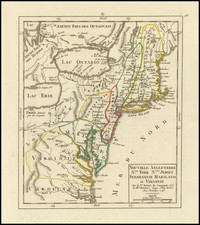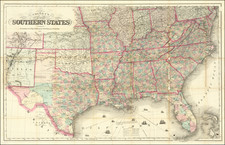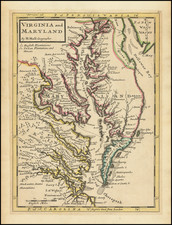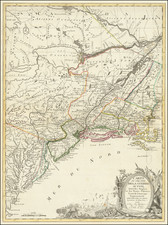Important large format map issued by S. Bernard, Brigr. Genl. and William Tell Poussin, Capt. Top. Engrs, both on the Board of Internal Improvement.
The map provides a detailed picture of a strip of land 27 miles wide between Baltimore and Philadelphia, on a scale of three miles to the inch. Filled with historical details and information including a copper factory, forts, ferries, mills, and more. Some roads are named and all are identified as projected, traveled or turnpike.
In 1825 the citizens of Maryland petitioned the Congress for the improvement of the Philadelphia-Baltimore mail road. Service often was delayed due to road conditions and fording requirements. The United States Post Office agreed with Maryland and, in a letter to Congress, stated that "as there is but little travel on the greater part of this route, when the steamboats ply upon the Chesapeake and Delaware, the necessary repairs upon it have been almost wholly neglected for some years past" (Lowrie and Franklin, p. 136).
One solution suggested in 1825 was to construct a bridge over the Susquehanna. By Congressional resolution in May, 1826, a survey party was established to explore alternative mail routes between Baltimore and Philadelphia. Their report and map were presented to the House in 1827 by Postmaster General John McLean. According to McLean, the map was "drawn with great care and ability; and as eight routes are laid down, with the data on which an estimate is formed of the expense of constructing a paved road on each, including bridges; a comparative view will show the most eligible route" (U.S. Congress, House, Document 94, p. 3).
That route was the second, traveling from Baltimore to the Bush River on a turnpike road; from Bush to Rock Run (Port Deposit bridge) on a traveled road; Port Deposit to North East on a newly constructed "straight line" road; from North East to Philadelphia on a turnpike road. The Port Deposit bridge already existed, having been built by the then defunct Rock Run Turnpike Company (1826). It is of interest to note that North is placed at a 45' angle to the page. This orientation is useful, as Baltimore appears at the left end of the sheet and Philadelphia at the right.
The present example of the map is offered with the original report to Congress.














![[Rare First State] Novissima Tabula Regionis Ludovicianae Gallice dictae la Louisiane . . .](https://storage.googleapis.com/raremaps/img/small/72622.jpg)